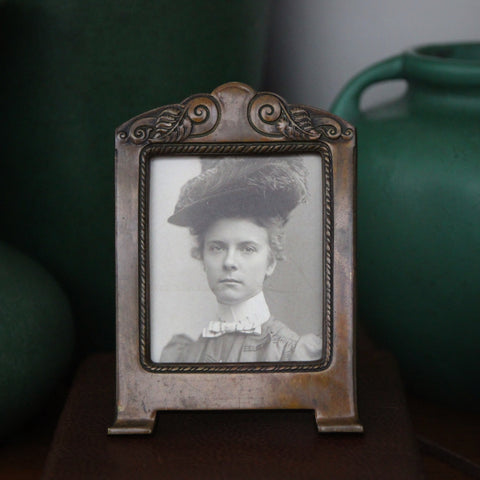The Art Nouveau Movement sprung-up in many different countries around the world—mostly within a three decade period (about 1890 through the Teens). In general, the different "schools of design" (which had different names in different places) marked a decisive break from the prevailing popular style—and relied on greater handcraft, "honest materials," and simplified, organic design. Some of these movements originated with a social, political, or national philosophy. But the Art Nouveau aesthetic was also utilized in some commercial-scale production (a seeming contradiction, given the earliest roots of the movement).
In Germany, the Art Nouveau aesthetic was called Jugendstil—the "Young Style" (or the "New Style). Like its other Art Nouveau cousins, the German version utilized materials in their natural form (like exposed copper, brass or wood), botanical and other nature-related forms (like plants and birds), and simple, pleasing shapes (which seem to have life in them).
Although Art Nouveau was an important design aesthetic, it was never quite as large as other design movements (such as Art Deco or Mid-Century Modern which were to come). For one, all that handcraft was expensive to make. Secondly, the middle class market (who could afford discretionary niceties) was smaller in 1900 than it would be in later decades. And finally, World War One was looming (1914-1918) which put an end to any "frivolous production" (so that money and labor could be directed to the war effort). By the time the War was over, and part of the world economy was able to recover, Art Deco was waiting-in-the-wings. Art Deco symbolized the optimism of the new machine age and was perfectly suited to mass-production. And, after the War, the Middle Class expanded enormously, with increased buying power to accumulate Middle Class discretionary products. Thus, the Art Deco style was incorporated into every type of consumer product imaginable, from electrical plugs to toasters to automobiles (from the Twenties to the Fifties). Art Nouveau, on the other hand, never enjoyed such broad consumer product saturation.
The copper picture frame, shown above, was made in Germany around 1910. Click on the photo above to learn more about it.
Though our Greenwich Village store is now permanently closed, LEO Design is still alive and well! Please visit our on-line store where we continue to sell Handsome Gifts (www.LEOdesignNYC.com).
We also can be found in Pittsburgh's historic "Strip District" at Mahla & Co. Antiques (www.mahlaantiques.com) or in Canonsburg, Pennsylvania at The Antique Center of Strabane (www.antiquecenterofstrabane.com).
Or call to arrange to visit our Pittsburgh showroom (by private appointment only). 917-446-4248


